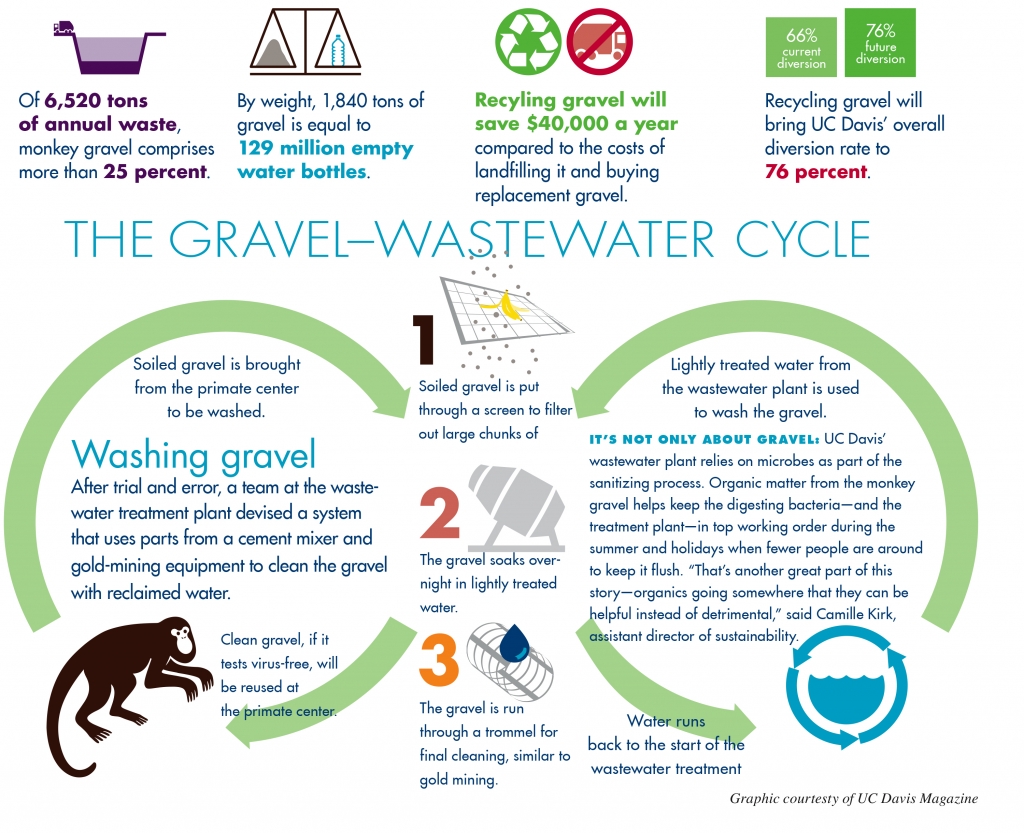(Green) Gold in a mountain of monkey gravel
“This was collaboration in the best sense with everyone working toward a common goal,” said David Phillips ’88, who oversees the wastewater plant as utilities director.
Pea gravel plays an important role in encouraging outdoor rhesus monkey activity at the California National Primate Research Center. The monkeys receive mental stimulation and enrich their diets by foraging in the gravel and grass within their outdoor corrals. And the gravel, unlike the grass, can be frequently changed to keep the habitat clean.
The challenge: Soiled pea gravel posed a weighty problem for the campus—70,800 pounds a week, or 1,840 tons a year, that was trucked to a landfill. Disposing of the old gravel was more costly than what the primate center paid to purchase new. But more important to campus sustainability efforts, the gravel created a mountainous obstacle to reaching UC-wide goals of zero waste by the year 2020.
The solution: Overcoming this challenge involved a partnership between sustainability officials, primate center leaders and campus facilities employees—a number of them UC Davis alumni.
Sid England, Ph.D. ’95, assistant vice chancellor for environmental stewardship and sustainability
Michelle La ’10, waste reduction and recycling coordinator
Dallas Hyde, Ph.D. ’76, professor and former director of the California National Primate Research Center
Jennifer Short ’82, assistant director of colony management and research services at the primate center
Mike Fan, M.S. ’99, manager of the wastewater treatment plant. Fan oversees a team that designed, tested and refined the device—apprentices Kelly Cowden and Servando Jimenez and their supervisor, Brad Butterfield.

